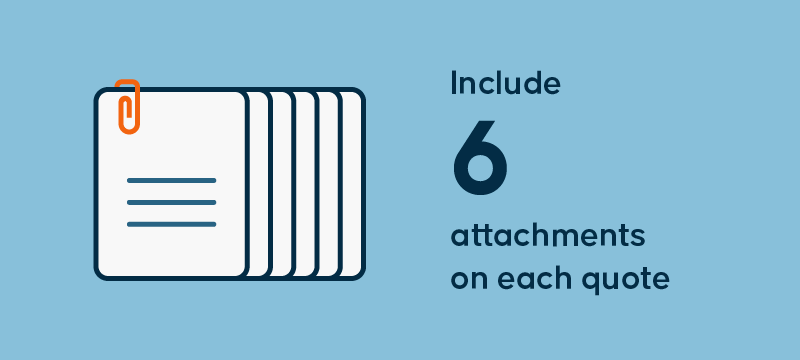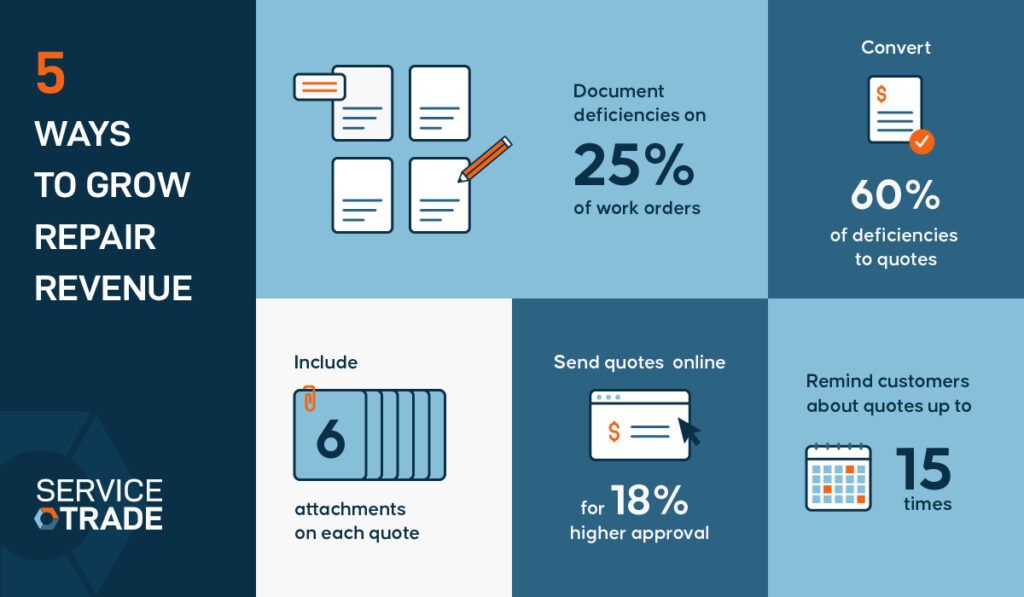Why Your Deficiency Reports Should Include Images, Videos, and More
Are your inspection reports still the bare-minimum text? If so, that could be the reason your customers are overlooking deficiencies and rejecting repair proposals. Your customers are becoming increasingly accustomed to images and videos. That means the way you capture and present data in both inspection reports and quotes can make a significant difference.
Enriching deficiency reports with detailed notes, photos, and videos helps customers understand the issues more clearly and increases the likelihood of quote approvals. This article explores the benefits of capturing more data and how to do it efficiently.

How Enriching Deficiencies with Supporting Media Impacts Revenue
Rich documentation of deficiencies is a proven way to boost repair revenue. Contractors who include detailed notes, photos, and videos with their deficiency repair quotes see higher approval rates. Our data shows that quotes with 5-7 rich media attachments are most likely to be approved, as they provide customers with a clear understanding of the issues and necessary repairs.
Additionally, a contractor who consistently enriches their deficiency reports with photos and videos builds trust with customers, who appreciate the thoroughness and transparency. Over time, this practice can result in increased customer loyalty and willingness to pay a premium for your services.
How More Detailed Deficiency Documentation Mitigates Risk
Maintaining detailed records of deficiencies is also crucial for mitigating risk. In the event of a claim, rich documentation provides solid evidence of the issues identified and the actions taken. This can be if there is a legal challenge.
Detailed deficiency reports also help customers understand the potential risks associated with unaddressed issues. By providing comprehensive documentation, you not only protect your business but also encourage clients to maintain safer facilities. This proactive approach can help protect lives and property.
What You’ll Need for Better Data Capture
To capture more data effectively, you’ll need the right tools and incentives for your team. Here’s what to consider:
Efficient Tools for Data Capture: Utilize mobile apps or software that allows technicians to easily attach notes, photos, and videos to deficiency reports. This ensures that data is captured accurately and promptly and makes your tech’s job much easier.
Incentive for Techs to Capture More Data: Encourage technicians to capture and attach rich data by introducing a rewards system, competition, or other ways of recognizing their efforts. Demonstrating how impactful their work is or otherwise showing your appreciation can motivate them to go the extra mile in documenting deficiencies.
Easy Sharing Mechanisms: Ensure there is a straightforward method for sharing these enriched reports with customers. This might include an online portal or automated email systems that send reports directly to clients.
Steps to Enhance Data Capture
Set Clear Expectations: Establish guidelines for the types of data technicians should capture. Aim for a standard of 5-7 supporting media items per report to maximize the likelihood of quote approvals.
Leverage Technology: Use tools that streamline the data capture process. Inspection management apps with built-in photo and video capture and note-taking capabilities can simplify the task for technicians.
Train Your Team: Provide regular training on the importance of rich data capture and the best practices for doing so. Highlight how this practice benefits both the business and the customers.
Monitor and Review: Regularly review the quality and completeness of the data captured. Provide feedback to technicians to help them improve and maintain high standards.
–
Capturing more data in your deficiency reports is a powerful way to enhance revenue, reduce risk, and build stronger customer relationships. But it’s not the whole story. To really transform your deficiency management, you’ll need to do a few more things. Learn more: The Deficiency Efficiency Guide: 5 Steps to Higher Revenue and Safer Facilities

From the Blog
Further Reading

Digital inspection forms are a powerful solution for life safety service contractors looking to streamline operations. However, at present, a majority of contractors in the fire protection business are still using paper. There’s a 60% chance that’s you! But as the world has come to rely on digitization, and more digital offerings like InspectionManager have […]
As a fire and life safety contractor, you’re well aware that not all inspection forms are created equal. You know you need well-designed forms to ensure compliant, accurate, and efficient inspections. But what makes an inspection form well-designed? In this article, we’ll lay out the 6 must-have inspection form elements you should look for to […]
